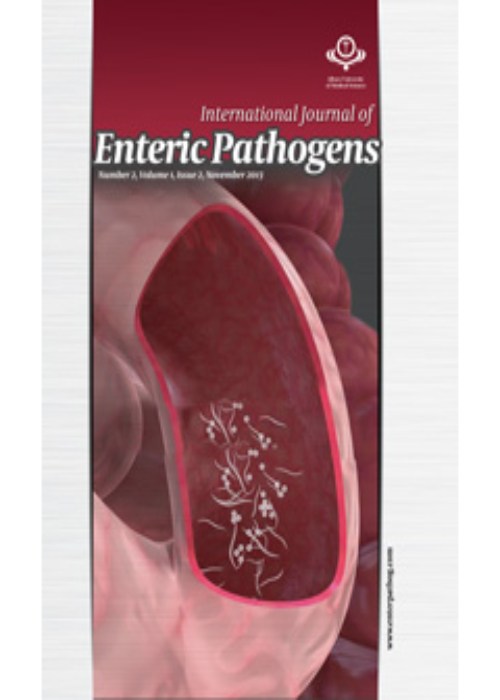Distribution and Antimicrobial Resistance Profile of Yersinia Species Isolated From Chicken and Beef Meat
Author(s):
Abstract:
Background
Foodborne diseases are widespread and growing public health problem in developed and developing countries. There are many microorganisms act as etiological agents for foodborne diseases such as Campylobacter spp., Listeria, Staphylococcos, Salmonella, Bacillus, Yersinia spp. High prevalence of gastrointestinal illness, including fatal cases attributable to yersiniosis, is also observed in many developing countries..Objectives
The purpose of this study was to investigate the prevalence of Yersinia enterocolitica and other Yersinia species in meat and chicken samples in various seasons and to determine their antibiotic resistance profile..Materials And Methods
To investigate the prevalence of Yersinia spp., a total of 450 samples, including chicken (n = 226) and beef meat (n = 224) were collected from supermarkets in Tehran. All samples were transported on ice to the laboratory and microbiological analysis was carried out within 2 hours after the collection. Susceptibility testing of bacterial strains was according to CLSI guideline at 28˚C by the disk diffusion assay..Results
From a total of 450 samples, (226 chickens and 224 beef meats), 70 (15.5%) samples were positive for Yersinia spp. Of these isolates, (80%) 56 species were identified as Y. enterocolitica, 8 (11%) as Y. frederiksenii, 5 (7%) as Y. intermedia and 1 (1.4%) as Y. kristensenii. The highest rate of resistance was seen against cephalotin (98%), and ampicillin (52%). However, gentamicin and chloramphenicol were the most active antibiotics against the target cultures. Considering the season of isolation, Yersinia spp. were frequently isolated in autumn (52%), followed by spring (29%)..Conclusions
Y. enterocolitica was the most spp. distributed among other species. Many factors, such as isolation assay, season, and geographical location play critical role in reports of increase or decrease in the prevalence of the Yersinia spp. all over the world. Our findings demonstrate that the isolation ratio of Y. enterocolitica and other species is higher in colder regions. Most of the isolates were resistant to first generation cephalosporins (cephalothin). The most active antimicrobial agents were choloramphenicol, aminoglycozide and sulfunamdes. Regarding to the high sensitivity of Yersinia spp. to gentamicin and chloramphenicol, these antibiotics would be the choice for the treatment of Yersinia infections..Keywords:
Language:
English
Published:
International Journal of Enteric Pathogens, Volume:3 Issue: 4, 2015 Nov
Page:
3
magiran.com/p1462767
دانلود و مطالعه متن این مقاله با یکی از روشهای زیر امکان پذیر است:
اشتراک شخصی
با عضویت و پرداخت آنلاین حق اشتراک یکساله به مبلغ 1,390,000ريال میتوانید 70 عنوان مطلب دانلود کنید!
اشتراک سازمانی
به کتابخانه دانشگاه یا محل کار خود پیشنهاد کنید تا اشتراک سازمانی این پایگاه را برای دسترسی نامحدود همه کاربران به متن مطالب تهیه نمایند!
توجه!
- حق عضویت دریافتی صرف حمایت از نشریات عضو و نگهداری، تکمیل و توسعه مگیران میشود.
- پرداخت حق اشتراک و دانلود مقالات اجازه بازنشر آن در سایر رسانههای چاپی و دیجیتال را به کاربر نمیدهد.
In order to view content subscription is required
Personal subscription
Subscribe magiran.com for 70 € euros via PayPal and download 70 articles during a year.
Organization subscription
Please contact us to subscribe your university or library for unlimited access!


